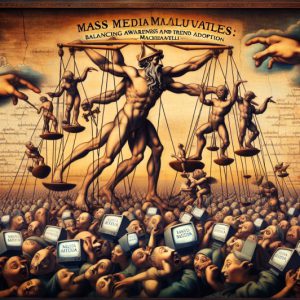Dangers of religion: Let’s look at some facts
Updated Aug 2023
We are told to walk in the path of light, but what if most people misunderstood this message? Typically, light is made to look good, and darkness is supposed to be wrong. If most so-called contrarians were true contrarians, they would question this premise; if they applied mass psychology and common sense, they would most definitely examine the above perceptions.
Science has now proven that approximately 95% of the universe is black (as in darkness). So that means only 5% is in the light. This information alone should be enough to make one think. But let’s go further. It has been shown that humans, on average, use about 5-7% of their brain capacity and geniuses at most 15%. Hence, it’s safe to assume that the most advanced human being would only know maybe 0.05%, if not less, of this 5% of the universe in the light.
Next, the reason most people are afraid of the dark is that they fear the unknown, but if you fear the unknown, then how can it ever become known? So, in essence, the fear is irrational, as it’s based on pure hearsay or superstitious beliefs, twisted religious beliefs, etc. Now, just with the above info, a contrarian would say perhaps the darkness holds the secret, as 95% of the universe is black. How could you learn anything by just studying 5% of what’s out there; that is the equivalent of some jackass reading one book on investing and assuming he is the world’s best investor.
Dangers of religion: Let’s dig even deeper
And use the knowledge that is available to anyone who might want to pursue this subject further. An object gets its colour by absorbing all the other colours except the colour it reflects, so a blue thing is blue because it absorbs all the different colours except blue. Taking this one step further, we could say that darkness is the path of light only because it absorbs all the light and reflects black, and sunlight is darkness because it absorbs all the black and reflects just the light.
If something absorbs light, one would have a better chance of finding the answer than something that only consumes the darkness. We don’t go to idiots and ask them for advice. Do we? Idiots absorb everything else besides knowledge, and the opposite can be said for geniuses.
Okay, this was a simple mental exercise and examining the facts using simple data available to most individuals. We are making no assertions whatsoever. Draw your conclusions. We only wanted to offer a different view and possibly push you to put your thinking caps on.
Application of the Light and darkness concept to the Stock Markets
Everything is interrelated today; we no longer have unrestricted market forces. Everything is manipulated, from the food you eat to the provided data. If you are aware of this, you can plan accordingly. Identifying the problem is over 80% of the solution, and this is why most people do not know what to do because they do not understand the problem. Mass psychology is a potent tool, and if employed correctly, it can help you spot the abnormal levels of manipulation the masses are subjected to. It would be a good idea to familiarise yourself with the concept of “ Plato’s allegory of the cave.”
Final thoughts
It is easy to hide behind concepts that one does not understand and or ones that can only be accepted by those who are willing to believe in something that they have no way of proving, for it allows you to say, “It was not my fault”. When one hides behind something, one can lay blame on some other entity or power, etc.
All you control is the now. Enjoy the now and worry less about the next moment, for you can’t control that moment. It might come or not come, but if you enjoy the now, you will embrace a path that pushes you towards a higher level of consciousness. Individuals with higher levels of consciousness are less prone to violence and more prone to dialogue.
Embrace Open-Mindedness: Explore the Following Videos
Please refrain from viewing these videos if you are not open-minded. Our intention is not to provoke anyone; instead, we aim to stimulate thought and contemplation. The video in question discusses certain risks associated with religion. However, it’s important to note that we are not the creators of this video. To present a balanced perspective, we have also included a video showing arguments favouring religion.
Conclusion on the Dangers of Religion
In conclusion, exploring the concept of light versus darkness prompts us to examine widely accepted notions critically and delve deeper into understanding. By questioning conventional wisdom and embracing a contrarian perspective, we open ourselves up to new possibilities and expand our knowledge. The dangers of religion become more apparent when we apply critical thinking and analyze the available information. Through seeking truth rather than blindly accepting beliefs, we can uncover valuable insights and elevate our level of consciousness.
By acknowledging that the vast majority of the universe is composed of darkness, as scientifically proven, we challenge the prevailing bias towards light. This realization invites us to question why darkness is often associated with negativity and fear. It prompts us to consider the immense potential hidden within the unknown and encourages us to explore the uncharted territories of knowledge and understanding.
The concept of absorbing light versus consuming darkness offers a fresh perspective. Just as objects derive their colours by absorbing specific wavelengths of light, darkness can be seen as a path of light by absorbing all other aspects and reflecting blackness. This notion challenges us to question the prevailing assumptions about morning being inherently good and darkness being inherently evil. It urges us to consider that profound discoveries and revelations may lie within the darkness, waiting to be illuminated.
Light vs Darkness
Applying this concept to the stock markets, where manipulation and interconnectedness prevail, becomes vital. Understanding the pervasive influence on various aspects of our lives, including the food and information we receive, allows us to adapt and plan accordingly. By recognizing the role of mass psychology and being aware of the abnormal levels of manipulation imposed on the masses, we can navigate the complex dynamics of the financial world more effectively. Familiarizing ourselves with philosophical concepts such as “Plato’s allegory of the cave” empowers us to perceive the hidden realities behind the veils of illusion.
This exploration encourages us to question beliefs, seek knowledge, and embrace a higher level of consciousness. It reminds us that hiding behind concepts we do not fully comprehend or accepting unfounded assumptions relinquishes our ability to take responsibility for our actions and choices. By living in the present moment and experiencing the now, we can find joy and serenity, reducing the tendency towards violence and nurturing a propensity for meaningful dialogue.
While we have provided thought-provoking ideas and perspectives, it is essential to note that pursuing knowledge and understanding is a personal journey. We encourage open-mindedness, further exploration, and engagement with diverse viewpoints and sources. By expanding our horizons and engaging in meaningful discussions, we can continue to evolve intellectually and contribute to improving ourselves and society.
The Multifaceted Benefits of Christianity: Enriching Lives and Communities
Exploring the other side of the argument is crucial to gaining a comprehensive understanding. Let’s now delve into the benefits of religion, specifically Christianity.
Christianity, one of the world’s largest religions, offers numerous benefits to its followers. These benefits extend beyond the realm of spirituality and positively impact individuals, communities, and society as a whole.
First and foremost, Christianity provides a sense of purpose and meaning to believers’ lives. It offers a moral framework and a set of values that guide their actions and decisions. This sense of purpose can bring comfort, hope, and a sense of belonging, especially during challenging times. Christianity teaches love, forgiveness, and compassion, encouraging believers to treat others with kindness and respect.
Furthermore, Christianity promotes personal growth and self-improvement. Christians seek wisdom, understanding, and spiritual growth through prayer, meditation, and studying religious texts. Pursuing knowledge and self-reflection can lead to personal transformation, increased self-awareness, and a deeper understanding of one’s purpose in life.
Christianity also fosters a strong sense of community and social support. Churches serve as gathering places where believers can unite to worship, share their joys and sorrows, and support one another. This sense of community provides a support network, fostering a sense of belonging and reducing feelings of isolation.
Moreover, Christianity encourages acts of charity and service to others. Christians are called to love their neighbours and help those in need. This emphasis on altruism and compassion leads to the establishment of charitable organizations, hospitals, schools, and other institutions that benefit society as a whole. Christians often engage in volunteer work and contribute to humanitarian efforts, positively impacting their communities.
Lastly, Christianity offers believers a sense of hope and eternal life. The belief in an afterlife and the promise of salvation provide comfort and reassurance, especially in the face of adversity and mortality. This hope can bring solace and peace of mind, allowing individuals to face life’s challenges with resilience and optimism.
In conclusion, Christianity provides numerous benefits to its followers. It offers a sense of purpose, personal growth, community, and social support. It encourages acts of charity and service, benefiting both individuals and society. Additionally, it provides believers with hope and a sense of eternal life. These benefits contribute to the overall well-being and fulfilment of Christians, making Christianity a significant force in the lives of millions worldwide.
A Summary of Christian Thought – Tim Upshaw
In my opinion Christianity supplies a more credible world view than competing thought systems. While this format is more attune to giving an overview than an exhaustive treatment, I do want to outline the skeleton of my thoughts on this. I draw from several sources and will try to give credit as much as I can recall on those specific sources.
I’ll divide up my thoughts into first the existence of God and second to the revelation of Himself through Jesus Christ.
The Existence Of God
First, two scientific arguments for the existence of God include arguments from both thermodynamics and genetics. Most scientists today acknowledge the universe had a beginning. The first law of thermodynamics is sometimes referred to as the conservation of mass and energy. The sum total of mass and energy is constant, though they may be interconverted as described in Einstein’s e = mc2 equation. If the sum total is constant in all known naturalistic processes, but science argues for a beginning to the universe – from nothing, then the mass/energy that we see today came from something other than naturalistic processes. The most obvious argument is that a supernatural Creator God made what we see in some form. Note that the first law of thermodynamics doesn’t just say we don’t know how something might have come from nothing, it says that this would be scientifically impossible by natural means. Currently, some scientists present the multi-universe argument in an attempt to circumvent this.
However, they are stuck with an even more difficult tale to explain: How did we get a universe that created machines from nothing by naturalistic means? The second brief argument for God relates to genetics. Suppose we see a website like the one you may be reading this on. In that case, we understand that with human language describing information as well as computer languages needed to put the website together it didn’t arise from nothing. Someone is putting all of this together. Likewise, the human genome is full of language and intelligence. The impact of this field of study has been nicely summarized by Cornell geneticist Dr. John Sanford in Genetic Entropy. Basically, it states that the human genome could not have arisen by chance natural processes.
This is buttressed by huge numbers of computer simulations with “Mendel’s Accountant”. You can go review the work. Dr. Sanford has invited critique, and no one has taken the challenge. He shows that in layman’s term, arguing the human genome came from chance processes is even worse and less scientific than the following simple example that he gives. Imagine you have inclusive instructions to manufacture a child’s red wagon. These instructions would include making the paint and rubber.
Now assume you have a typist copying the instructions. Over time through the typist’s mistakes, instructions to make the space shuttle would emerge. This is not a credible scenario, and the assumption that the human genome came from nothing via solely naturalistic processes is even less credible because a purely naturalistic argument cannot account for the appearance of a typist needed in the above scenario.
In summary, the belief in a Creator God is a much more credible case than a belief in some solely naturalistic process that violates known scientific law and numerous genetic simulations.
The Revelation Of God In Jesus Christ
While the existence of God is indeed extremely credible from scientific evidence, science cannot confirm or deny the existence of Jesus Christ and events concerning His life. To consider this I would recommend more of a courtroom scenario where we seek to find the truth about Christ beyond a reasonable doubt. Obviously, we cannot travel back in time over 2000 years to prove or disprove His existence and life, so we must concern ourselves with the available evidence.
I will confine my own thoughts here to Christ’s life and resurrection, followed by His fulfillment of prophecies.
First, the possibilities for the life of Christ were neatly summarized by C.S. Lewis in Mere Christianity. Either Jesus was Lord, a liar, or a lunatic. Either Jesus was the God He claimed to be – making Him Lord, or he was not God and knew He was not God – making Him a liar, or he was not God but thought He was God, making Him a lunatic. Some want to ascribe the title of “Great Moral Teacher” to Him, but that is not an option. He did not leave it as an option. Indeed, He taught great moral truths and lived an exemplary sinless life, making my opinion of Him to be exactly Who He claimed to be – God in the flesh.
Second, I want to outline further arguments for Jesus’ life and resurrection.
- There were 4 ancient biographies of Jesus written by eyewitnesses, not a later legend. 1
- As of 2014, more than 66,000 early manuscripts are known, orders of magnitude more than other ancient texts.
- Reference the historical reliability of the New Testament. If you don’t accept the New Testament as being historically accurate, you should throw away all literature of antiquity. Forget Homer, Plato, and Caesar. If you accept their works as accurate, you are being intellectually dishonest to ignore the New Testament.
Jesus was a real person who was crucified and died
- Almost no historian disputes that Jesus lived in the first century, carried out a ministry for a few years, and was crucified to death by the Romans. Even skeptic Bary Ehrman argues vigorously for these facts based on both Christian and non-Christian sources. 2
- Several manuscripts from multiple sources, including Jewish historians, describe a man named Jesus Who lived and was executed. Blood and water spilled from a spear wound in His side (release of clear fluid that has abnormally collected around His lungs or heart). He really died and was not merely unconscious. 3
His body was buried in a tomb.
- There is strong evidence for His burial. It is recorded in all 4 Gospels and explicitly mentioned in 1 Cor. Given multiple attestations is one of the major criteria by which NT scholars adjudicate the historicity of an event, the fact that several independent sources reference the same event strongly suggests that it is historical. 5
- The Gospels all claim Jesus was buried by Joseph of Arimathea, a member of the Sanhedrin, the Jewish religious court that condemned Jesus to death. It seems unlikely that early Christians would have invented this detail involving such a prominent figure who was a member of a group opposed to the early Christian movement. 5
- The grave/tomb was found empty the 3rd day after Jesus was buried. A recent survey of three decades’ worth of academic literature shows that this was accepted by a majority of scholars who wrote on that subject. 5
The gospel accounts of the crucifixion and empty tomb are credible historically. 5
- A commonly cited reason for the empty tomb’s credibility in the gospel accounts give women as the first witnesses to the empty tomb. A made-up story would not have used these. The status of women was quite low in the first century. Josephus claimed that Jewish law expressed the following sentiment regarding the reliability of women. “Let not the testimony of women be admitted, on account of the levity and boldness of their sex.” If early Christians were inventing a narrative to support their own version of events, why not use witnesses who would have been seen as more credible? A disconcerting fact: The women who set out to pay their last respects to Jesus found to their consternation, not a body, but an empty tomb.
- A second factor supporting the historicity of the empty tomb is the fact that just 7 weeks after Jesus’ death, the apostles began preaching the resurrection in Jerusalem itself, the very city in which Jesus had been crucified. It’s hard to see how the fledgling Christian movement could have survived despite the opposition of ruling authorities if the corpse of Jesus had been interred within walking distance of the temple. Any skeptic who wanted to refute the claims of the apostles could have silenced them by taking a short stroll to the burial place of Jesus. Yet we have no record of anyone claiming the disciples lied about the empty tomb. How did Christianity grow so rapidly in the very place where Jesus was buried if it could have been falsified so easily?
Jesus appeared 11 recorded times to people after His death, not counting to Paul. 1
- He appeared to men, women, individuals, couples, groups, and at least one crowd.
- He was physically touched, audibly heard, visually seen. He ate food in the presence of witnesses.
- None of these believed Jesus would rise from the dead before He actually did. All of them knew Jesus before He died, so they knew He was Jesus.
- The majority of scholars in the field concur that these visual experiences did occur. The accounts of Jesus’ post-resurrection appearances are replete with tactical details. 2
- Jesus appeared to many others of His followers, at one time more than 500 witnesses at once. What if there was a question of them only thinking they saw Jesus, implying there was some sort of hallucination? But hallucinations happen on an individual basis. There is no recorded incident of a group hallucination in history. 4
The transformation in the disciples from fearful to fearless after the resurrection. The apostles stuck to their story. 4
- After Jesus’ violent death, His followers were frightened and scattered. Then something happened that grew a strong, confident belief that resisted sustained, murderous opposition. Unlike other movements with executed leaders, once the disciples came back together, they did not replace Jesus with one of His family members. They were all willing to die for what they saw. What changed them? Why was there not evidence to undermine this belief?3
- Historians nearly universally accept that the disciples genuinely believe they encountered the resurrected Jesus, even if they were mistaken. The reason for this consensus is the persecution endured by the apostles for their belief in the resurrection. The apostles were repeatedly beaten and imprisoned. There is good historical evidence that James, Peter, and Paul were all executed for their faith, and church tradition maintains that as many as 11 of the 12 apostles were eventually martyred. This makes it difficult to maintain that the apostles knew the resurrection was a hoax. What would their motivation have been to have invented these resurrection stories? Unlike the 9/11 terrorists, who also were willing to die for their beliefs, the apostles were in a position to know with complete certainty whether their claims were true. They were claiming to have seen, touched, and conversed with a man who had been executed just days earlier.5
- The disciples of Jesus were caught off guard by His arrest and death. They spent the day after He died alone, scattered, confused, and grieving. They were defeated. They would go on to be bold defenders of the Christian message. One of the 12, Judas, had betrayed Jesus and killed himself. The other 11 witnessed Jesus alive. Ten of them would eventually be killed for testifying that Jesus lived according to church history, and the 11th was exiled and imprisoned. These men persisted even as they faced the choice of renouncing their message and admitting it was a lie or giving up their lives. The chose death. Not one of them renounced their testimony throughout their lives. Why would so many men die for something they knew was not true? The only reasonable conclusion is that it is true. 4
Conversion of Paul 5
- Paul was originally a vehement opponent of the church and even consented to the stoning of the first Christian martyr, Stephen. While travelling to Damascus to continue his persecution of the early church, Paul suddenly became a Christian, claiming he had encountered Jesus on the road.
- Because of his original opposition to Christianity, Paul can be regarded as a “hostile witness”. He had no incentive to accept Christianity, short of having had an experience that could unambiguously confirm that Jesus was alive.
- Paul’s conversion put him at immediate odds with the Jewish religious leaders in every city to which he traveled.
- Paul was whipped, beaten, stoned, and shipwrecked as a result of his faith.
- There were significant spiritual implications. Paul went from regarding Jesus as a false prophet to believing that Jesus was the unique Son of God, Who alone offered salvation to all humanity.There was explosive growth in the Christian movement where Jesus was killed and buried. 1
- In the very place where Jesus died and was buried, there was an explosion of growth in the Christian movement, which centered on Jesus’s resurrection.
- The explosion of growth happened mere weeks after the death and resurrection of Jesus and happened in the face of hostility, opposition, and persecution from civil and religious leaders.
Aside from Jesus’ life and impact on the world, there is the fact that He fulfilled over 300 prophecies from the Old Testament that pre-dated Him. Considering only 8 Messianic prophecies from the Old Testament, the odds are 1 in 1017 that any person who has lived down to the present time could have fulfilled just these 8 prophecies. 6 These odds are pretty phenomenal.
The evidence is quite overwhelming, confirming not only that there is a God, but that Jesus Christ was a manifestation of God in the flesh Who demonstrated His claims through His life, death, and resurrection. Many other arguments could have been brought forth, but I offer these for consideration.
If you wish to go beyond an academic consideration of Christ, I would invite you to begin reading the books of Mark and John prayerfully in Scripture.
All the best,
Tim Upshaw
Footnotes:
- The Gospel Coalition – 10 Concise Pieces of Evidence for the Resurrection
- A Scientist Looks at the Resurrection – Peaceful Science
- Science, Evidence, and the Resurrection – Peaceful Science Joshua Swamidass
- The Evidence of Jesus’ Resurrection – Brittany Yesudasan – Cru
- 4 Points of Evidence for the Resurrection – Ned Sherivi
- Jesus Fulfilled Over 300 Prophecies
Other Stories of Interest

IPI Stock Price: Ascending Star or Descending Dagger?

Silver and Gold Bull: Charging-Poised for a Powerful Move

Stock Market Manipulation: The Dominion of Financial Engineers

Strategic Safeguard: How to Prepare for a Stock Market Crash

Permabear Doomster Debacle: Daring to Defy the Dire Predictions!

How Much Money Do You Need to Invest in Real Estate?

Mass Media Manipulates: Balancing Awareness and Trend Adoption

What is Mainstream Media? Navigating the Web of Truth & Deceit

Market Mastery: Unconventional Paths to Stock Market Success

The Pillars of Investment Success: Cultivating Patience and Discipline

Contrarianism and Mass Psychology: A Dynamic Duo for Market Success

How much money do i need to invest to make $1000 a month?

What are the leading economic indicators supposed to predict?

Examples of Groupthink: Instances of Collective Decision-Making

Flush with Cash: Investors on Edge, Hesitant to Deploy Capital
Unlocking the Secrets: Mastering How to Read Stock Trends



